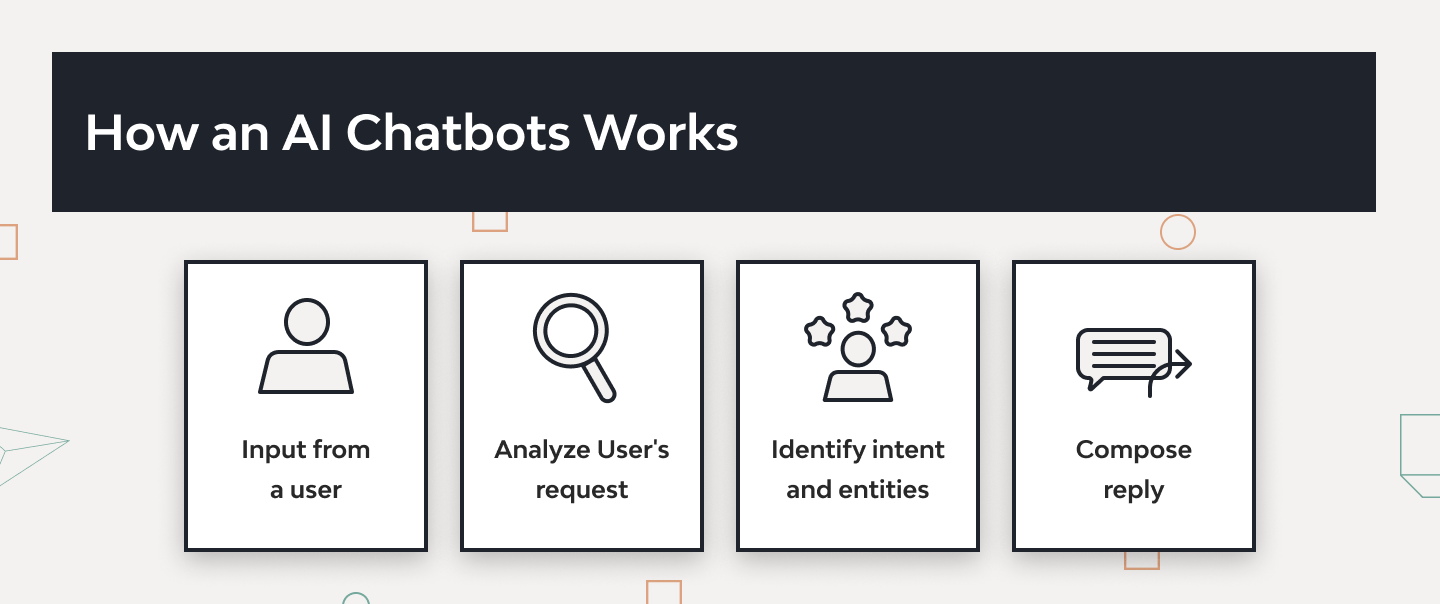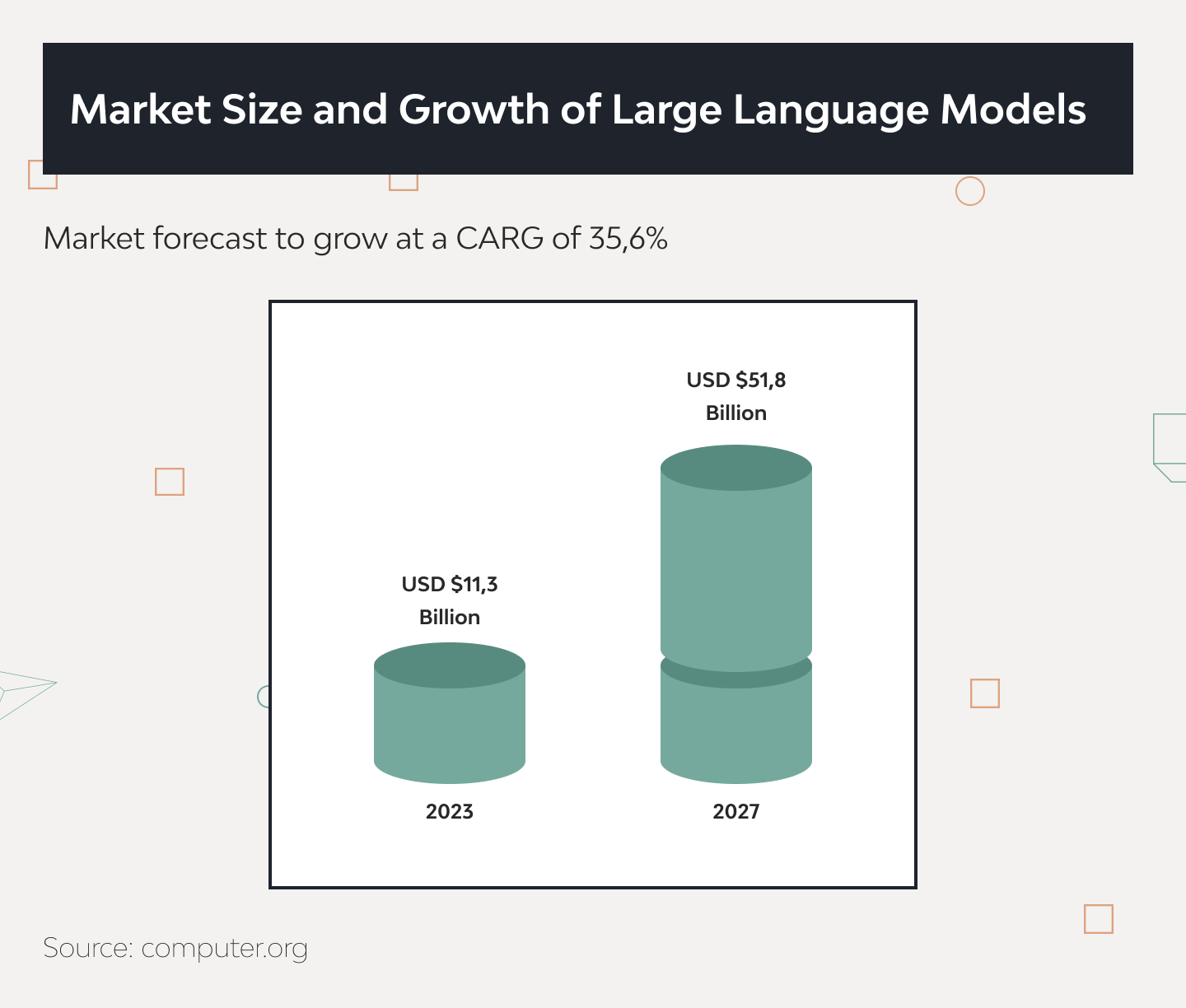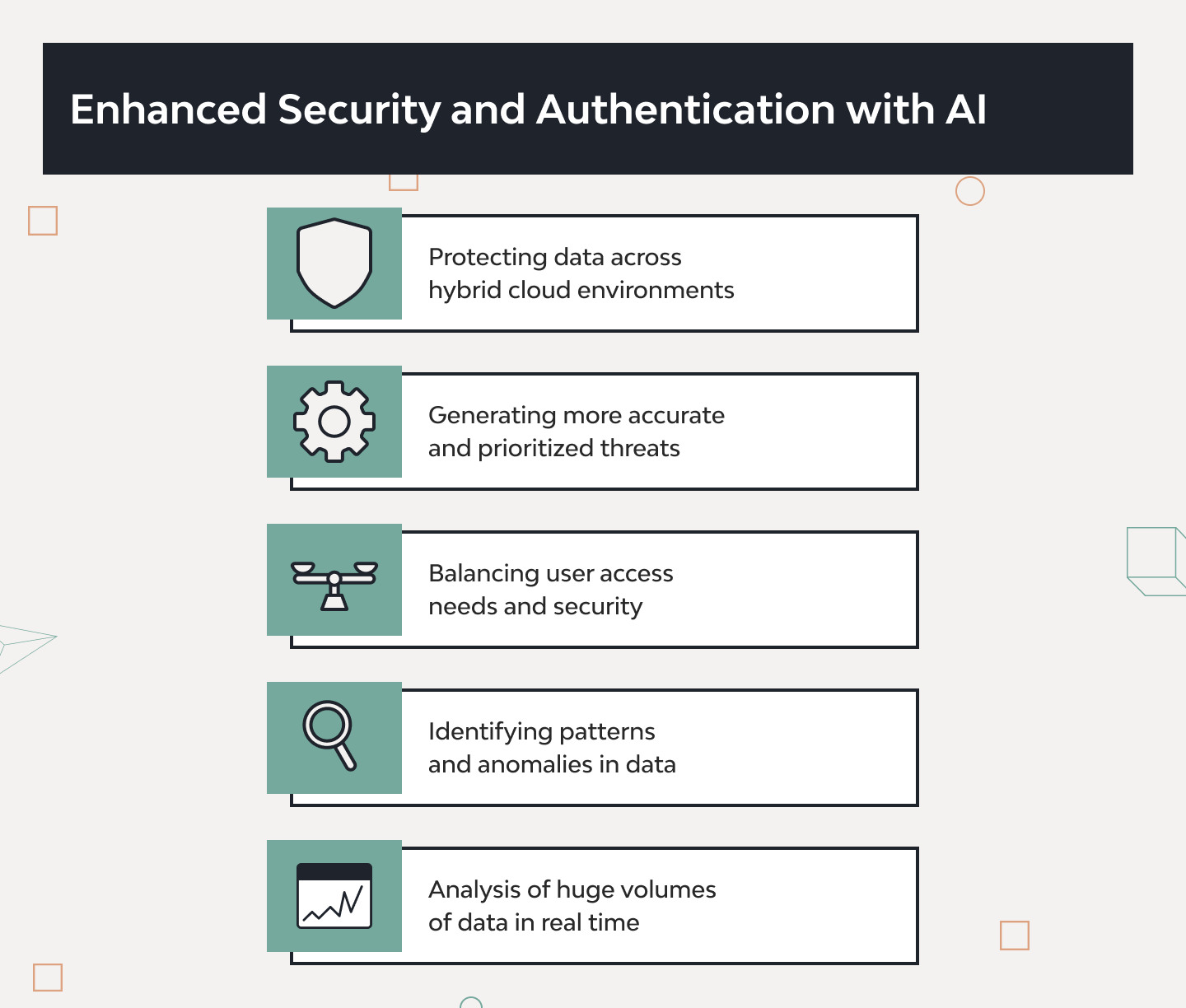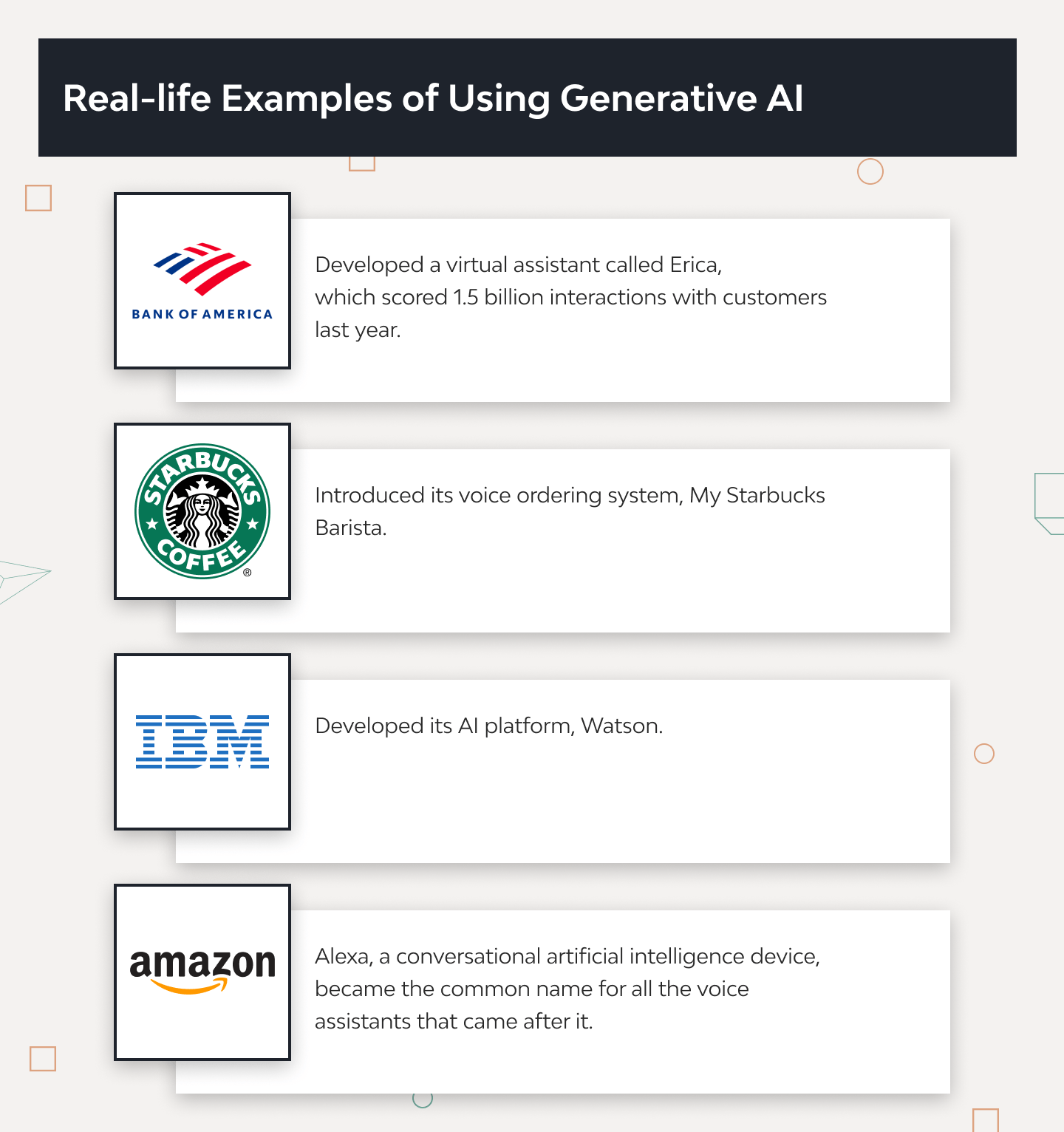Top 7 Conversational AI Trends for 2026

One of the most recognizable and easily adaptable solutions for businesses is the conversational AI trend. Many commonplace users treat it as a chat with an abstract assistant, as it can understand, process, and respond to human language naturally and intuitively. It is trending because it allows businesses to automate customer interactions, providing each user with a seamless and personalized experience.
However, the capabilities of this technology are not limited to customer service only. Let’s see where conversational AI trends can stretch and how they will shape the technological landscape in 2026.
The List of Conversational AI Trends that Will Shape 2026
From the advancements in natural language understanding and their impact on human-like interactions, enhanced security measures, and responsible AI usage, there is a thing or two to know about the conversational AI trend for businesses. So, here are the top focal points in the global AI buzz for this year.
Trend 1: Advancements in Natural Language Understanding (NLU)
This subfield of AI has been experiencing substantial advancements recently. This technology focuses on teaching machines to interpret human language to improve the flow of AI interactions with humans.
The development of NLU aims for a deeper understanding of context, which makes conversations more sophisticated and context-sensitive. It employs machine learning and deep learning techniques to perform tasks like language translation or answering questions. NLU allows computer systems to understand sentiments expressed in various human languages, including English, French, and Mandarin.
The growing market for NLU proves its relevance across industries. As companies work towards improving their customer interactions, the ability of NLU to interpret meaning and context in language becomes increasingly valuable. It can help in analyzing customer feedback, automating customer service, and personalizing user experience. It can also assist in processing large volumes of data, identifying trends, and making data-driven decisions. The future holds immense potential for NLU, particularly in revolutionizing communication between businesses and customers.
Trend 2: Increased Integration with IoT Devices
Another significant conversational AI trend is integration with the Internet of Things (IoT). It has the potential to transform businesses and their operations. Retailers, for instance, are using AI-driven insights from IoT data to personalize offerings and target their audiences more effectively. The rapid ai/ml development services in this field presents new opportunities, requiring users to closely monitor AI advancements.
AI and IoT together can create new products or enhance existing ones by swiftly processing and analyzing vast amounts of data. The application of AI in IoT can improve operational efficiency, enhance safety, and offer personalized experiences. To fully leverage AI and IoT, businesses have to focus on seamless connectivity between their systems and devices. As the combination of AI and IoT provides useful insights, it’s paving the way towards a connected and intelligent future.
Trend 3: Personalization Through AI
Personalization is a big technological tendency by itself, so this conversational AI trend is natural for 2026. AI can analyze vast amounts of customer data, identify patterns and behaviors, and thus help businesses deliver curated and personalized experiences. Tailored offers for individual customer preferences enhance engagement, improve loyalty, and boost sales. Plus, it is even easier to achieve with the help of the current conversational AI trends.
With the help of AI-powered data science, businesses can expand their creativity and strategy to wider audiences. This technology can also optimize pricing and promotions to offer customers more value. Moreover, the advent of AI-as-a-Service is helping businesses overcome the technical challenges of building such an infrastructure from scratch, so companies deliver personalized experiences more rapidly.
AI-based auto-personalization groups customers into segments based on visitor data. This way, businesses display the right content to the right audience. With AI-powered personalization solutions, organizations can target more audiences within optimal budgets.
Trend 4: Expansion in Multilingual Capabilities
The ever-expanding multilingual capabilities of AI allow businesses to eliminate barriers and extend their reach globally. Now, multilingual AI, such as chatbots, can communicate with customers in their native languages. Large language models are playing a transformative role in this area, as they reshape how we use data and pave the way for a potential AI market value of $51.8 billion by 2028. These models assist businesses in engaging with more customers and expanding their outreach.
As businesses expand their reach to multiple regions and languages, AI-powered translations cater to diverse audiences, enhancing marketing techniques. The use of AI in multilingual geolocation makes it easy to tailor content based on location and language preferences and further personalize user experience. Nonetheless, the central concern related to it is striking a balance between efficiency and linguistic authenticity.
Trend 5: Conversational AI in Employee Training and HR
The application of conversational AI models in human resources is another trend to stay, as it is revolutionizing how businesses operate. With this technology, companies can automate numerous HR processes, from recruitment and onboarding to employee support. Plus, HR professionals have many opportunities to structure and personalize employee training programs with conversational AI applications. It is a great tool to monitor progress, provide employees with access to training resources, and create a more dynamic learning environment.
On top of that, since AI can streamline or automate repetitive HR operations, staff has more space for higher-level, strategic tasks or tasks that require creativity. As a result, what this technology brings to the table is enhanced employee experience, improved engagement, and a more productive workforce overall.
Trend 6: Enhanced Security and Authentication
Naturally, the security industry cannot be isolated from the global trends in conversational AI, which is why the technology already plays a crucial role in enhancing security and authentication within businesses.
AI helps to identify patterns and anomalies in data, offering a robust defense against cyber threats. AI’s machine learning algorithms can analyze vast amounts of data in real time. With such tools up their sleeve, organizations can detect and respond to potential security threats more quickly and accurately than traditional methods would allow.
Along with helping to create more elaborate security systems, AI is simplifying authentication processes for individual and corporate users, thus reducing the risk of identity theft and fraud. Advanced biometric systems (facial recognition and fingerprint scanning) are becoming increasingly common, thanks to AI. These systems recognize unique human features, providing a secure and user-friendly method of authentication.
Trend 7: Ethical and Responsible AI Usage
AI holds great promise for improving business operations, however, it also presents certain ethical challenges. The challenge here is that the technology is developing faster than the regulations around it.
One of the main ethical issues revolves around privacy. Conversational AI systems often require access to vast amounts of personal data to function effectively. Hence there are growing concerns about how this data is stored, protected, and used. On top of that, there are also intellectual rights concerts, since conversational AI operates on the information previously created by other people. In this regard, transparency is another key ethical issue. It is often unclear how AI systems make decisions or predictions, leading to a lack of accountability. Without transparency, it can be difficult to identify when errors occur or when the system behaves unethically.
Another big concern about this technology is bias. AI systems learn from the data they are trained on. If this data contains biases, the AI system may also exhibit these biases in its interactions. Naturally, the pre-created bias reinforces more bias in the future, which can be harmful at different scales.
In this context, the future of conversational AI will call for transparency in how its algorithms make decisions and use data. As a response to the challenge, businesses are adopting explainable AI models, which offer insights into their decision-making processes. For example, Harvard Business Review argues that businesses need an AI ethics committee to regulate its use and solve disputes over its misuse. It is necessary to sustain customer trust and loyalty, as well as comply with regulations and avoid potential legal issues. Furthermore, ethical AI usage is becoming a competitive advantage in the business world, as customers increasingly value companies that demonstrate a commitment to ethical practices.
Conversational AI Business Applications
This technology easily finds its place in different departments of companies across industries. They facilitate personalized customer service and expense optimization while powering the digital transformation of businesses. Here are some real-life examples of using generative AI in business.
Bank of America
One of the most well-known applications is showcased by Bank of America. The bank caught the conversational AI market trends and developed a virtual assistant called Erica, which scored 1.5 billion interactions with customers last year. The assistant uses conversational AI to help customers manage their accounts and process their requests. Erica can check balances, schedule payments, and provide credit report updates. With Erica, the bank’s customers have a seamless experience, while the human customer service team has a reduced workload.
Starbucks
Another prominent example is Starbucks’s mobile application. The company introduced its voice ordering system, My Starbucks Barista. It assists customers in placing their orders via voice commands or text messages. According to Starbucks representatives, it helps provide customers with a highly personalized experience with the coffee shop and optimizes staff expenses.
IBM
A multinational technology company, IBM, developed its AI platform, Watson. It employs natural language processing to understand and respond to user queries. Watson is helpful across various sectors of the company: in its healthcare, finance, and customer service branches, the bot is employed to analyze data, answer questions, and offer recommendations.
Amazon
Alexa, a conversational AI device by the e-commerce giant Amazon became a common name for all the voice assistants that came after it. Its task is to elevate the shopping experience for Amazon customers. This assistant can search for products, place orders, and track deliveries. Plus, it can give users product recommendations and create a fully personalized shopping experience.
These examples highlight how conversational AI can be utilized to improve customer service, enhance user experience, and increase operational efficiency. As this technology continues to evolve, its applications in business are set to expand further.
Future of Conversational AI
Based on the ongoing trends in AI technology, these are the things to expect in this industry in 2026.
“Emotionally Intelligent” Chatbots
Ultra-personalized customer experience is on top of the conversational AI technology trends. With advanced NLU and larger training sets, an ai voicebot responds more accurately and naturally, boosting overall chatbot effectiveness. Emotionally intelligent chatbots, while still under development, are expected to revolutionize customer service by understanding and addressing customer emotions effectively.
From Build to Buy
As many impactful solutions were built and tailored for specific businesses, the present abundance of conversational AI technology trends allows organizations to choose among existing solutions nowadays. The market is moving towards ready-to-use solutions, thus shifting from a build to a buy model. This shift suggests that businesses will seek the value in integrating pre-built AI solutions into their operations, rather than building these systems in-house.
Personalization in Conversational AI
As personalization remains a major trend in both business and technology, it takes one of the leading places in the future of chatbots and conversational AI. Such systems aim at making interactions more relevant and engaging by tailoring experiences to individual user needs. With the current advancements in AI systems, one can expect this personalization to become even more sophisticated.
The Role of Python & Django in Conversational AI
Python and Django pave the way for advancements in AI. Their flexibility and simplicity make them ideal for building sophisticated interactive systems. Python, known for its ease of use and learning, is a preferred language for AI and Machine Learning development. Its platform is independent and convenient to use, so it opens opportunities for creating custom chatbots and expanding their functionalities.
Django is a Python-based web framework that complements the capabilities of this programming language. With its flexible structure in building web applications and chatbots, engineers have all the resources to build elaborate systems and integrate generative AI in applications.
Conclusion
Artificial intelligence by itself is a large trend that disrupts and transforms the technological and business landscape. The most noticeable trend in this technology is expanding the sensitivity of such systems to nuances, which manifests in the business trend of elevated personalization of experience.
Today’s diversity of existing solutions allows businesses to choose between integrating pre-created systems into their software or building ones of their own in-house. Django Stars has broad expertise in building and integrating conversational AI solutions, such as machine learning, data engineering, and developing virtual assistants.
If you are looking for a custom AI integration for your business, be sure to book a consultation right away!
- What's the best conversational AI?
- Although one of the most popular chatbots today is ChatGPT it may suit businesses differently. A conversational AI solution must be discussed in the context of the business and customer needs that it covers, which is why it is difficult to pinpoint a sole system.
- What is the future of conversational AI chatbots?
- The ongoing trends in conversational AI suggest that its evolution is directed toward advancements in Natural Language Understanding (NLU), which means such systems will grow more sensitive to nuances and contexts. These technological advancements, in turn, will provide businesses with more opportunities in marketing and customer service personalization to elevate the experiences of their audiences. However, these technological developments will also call for more regulations around such systems.















